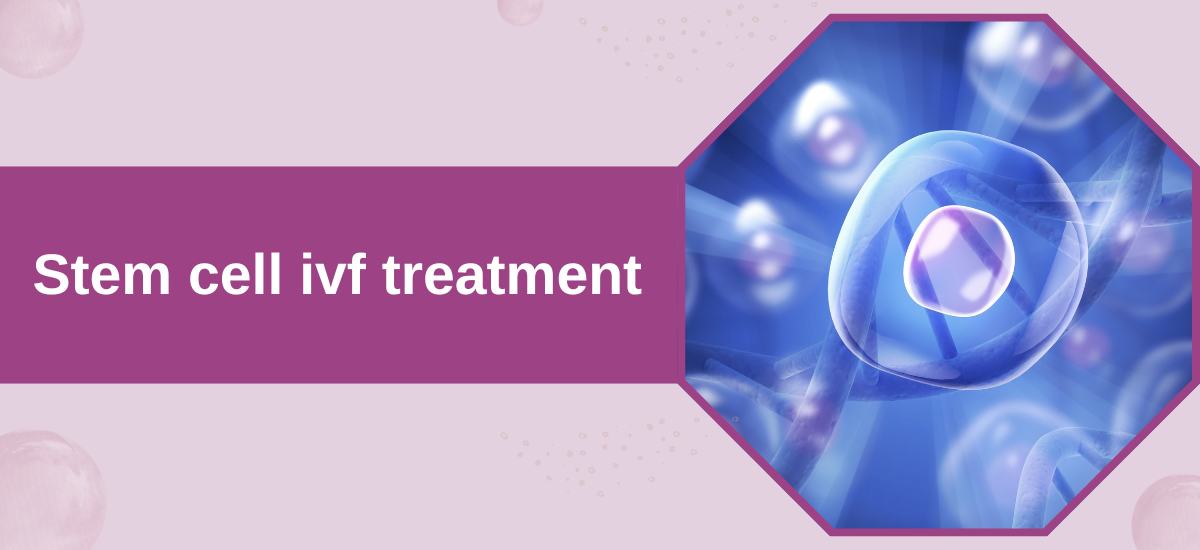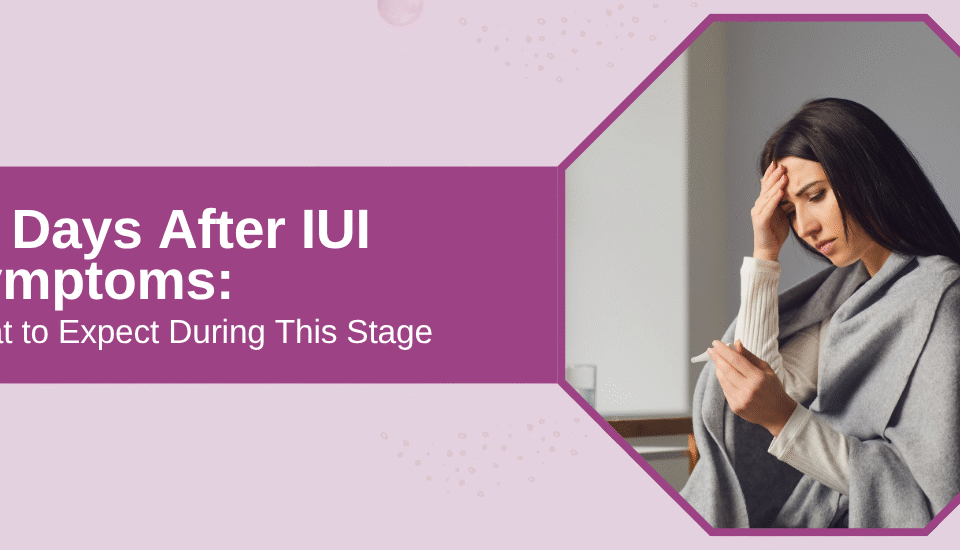- Have any questions?
- +91-98717 17305
- babiesandus12@gmail.com
Stem Cell IVF Treatment: A Revolutionary Approach to Fertility

No Cramping After Embryo Transfer
October 14, 2024
Finding Hope After 6 Failed IVF Cycles: Exploring the Path Forward
November 12, 2024Stem cell IVF treatment has emerged as one of the most promising breakthroughs in reproductive medicine, offering new hope to couples and individuals struggling with infertility. At Babies & Us IVF Center in Mumbai, we are at the forefront of this revolutionary technology, providing cutting-edge solutions for patients where traditional methods may have fallen short. By harnessing the regenerative power of stem cells, our team of experts is expanding the possibilities within assisted reproductive technologies (ART). In this blog, we will explore the ins and outs of stem cell IVF treatment, its benefits, risks, the procedure, and much more.

What is Stem Cell IVF Treatment? How Common Is It?
Stem cell IVF treatment is an innovative fertility solution that utilises stem cells to create viable eggs or sperm for fertilization. Stem cells are special cells that can transform into various types of cells in the body, and in this context, they can be directed to become gametes (eggs or sperm).
Infertility is a global issue, affecting around 10% to 15% of couples, according to the World Health Organization (WHO). Stem cell IVF holds the potential to be a game-changing option for many of these couples. Though still experimental, studies in leading journals like Nature and Cell Stem Cell show promise, as scientists have successfully coaxed stem cells into becoming functional gametes. As research and clinical trials continue, this treatment may become more widely available in the future.

Is Stem Cell IVF Treatment Safe ?
The safety of stem cell IVF is a primary concern, especially since it is still in the experimental phase. Early research suggests that stem cells can be effectively differentiated into eggs or sperm without increasing the risk of genetic malformations or other complications. However, as with any experimental treatment, long-term studies are required to confirm these findings.
Current research has been promising, but more trials and follow-up studies are needed before stem cell IVF can be considered a mainstream option.

Want to learn more about innovative fertility treatments? Contact our specialists to explore cutting-edge options like stem cell IVF and see if it’s right for you.
Eligibility for Stem Cell IVF Treatment
Stem cell IVF treatment may be particularly beneficial for individuals who:
- Have diminished ovarian reserves due to age.
- Have non-functional sperm or eggs due to medical conditions.
- Have failed conventional IVF cycles.
Because this treatment is still in its trial phases, availability is limited to clinical studies. It’s crucial to consult a fertility expert to determine if you’re eligible to participate in these trials based on current research.

Benefits and Risks of Stem Cell IVF Treatment
Benefits:
- Restores Fertility Potential: Stem cell IVF offers hope for those who cannot produce viable eggs or sperm naturally.
- Fewer Donor Gametes: This treatment reduces the need for donor eggs or sperm, allowing couples to use their genetic material.
- Fertility Preservation: It could become an option for individuals facing conditions like cancer that impact fertility.
Risks:
- Unknown Long-Term Effects: Since the treatment is still being studied, the long-term impact remains unclear.
- Genetic Concerns: There may be potential genetic risks associated with manipulating stem cells, although no major issues have been reported thus far.
- Ethical Considerations: The use of embryonic stem cells raises ethical debates for some individuals.
Types of Stem Cell IVF Treatment
There are two primary methods under exploration in stem cell IVF:
- Ovarian Stem Cell IVF: This involves harvesting stem cells from the ovaries, which are then cultured to produce viable eggs.
- Testicular Stem Cell IVF: For men with low or no sperm production, testicular stem cells are harvested and coaxed into producing functional sperm.
Both types are still experimental, with ongoing studies to further refine the procedures and determine their viability for human use.
Procedure for Stem Cell IVF Treatment
The general process for stem cell IVF includes the following steps:
- Stem Cell Extraction: Stem cells are extracted from the ovaries or testicles.
- Stem Cell Differentiation: These stem cells are cultured in a lab and encouraged to become eggs or sperm.
- Fertilization: Once viable gametes are obtained, the IVF process begins, with eggs being fertilized with sperm in vitro.
- Embryo Transfer: The fertilised embryos are transferred into the uterus for gestation.
This process can take several weeks or even months, depending on how well the stem cells respond to differentiation.

Looking to explore advanced fertility solutions? Schedule a consultation with our fertility experts to see how stem cell IVF may help you achieve your dream of starting a family.
What to Expect During Stem Cell IVF Treatment?
Stem cell IVF treatment involves multiple steps and several appointments. The initial step is the extraction of stem cells, which may require minor surgery. The laboratory process of differentiating these cells into eggs or sperm can take weeks or months. Once viable gametes are available, the IVF process follows standard procedures, including embryo implantation and pregnancy monitoring.
Recovery and Results from Stem Cell IVF Treatment
The recovery time after the stem cell extraction procedure is generally short, with most patients able to resume normal activities in a few days. However, the entire IVF process, including stem cell differentiation, can take several months. As stem cell IVF is still experimental, success rates are not well-established, but initial studies show promise.
Post op guidelines to follow
After stem cell-assisted IVF treatment, patients should rest for 24–48 hours, avoid strenuous activities, and follow all prescribed medications, including hormonal support if advised. A nutritious diet rich in vitamins and antioxidants is essential, while alcohol and caffeine should be avoided. Physical activity should be limited to light walking, and sexual activity, along with the use of tampons, should be avoided for about two weeks. Managing stress through relaxation techniques is encouraged, and attending all follow-up appointments is crucial for monitoring progress and ensuring the best outcome.
Side Effects of Stem Cell IVF Treatment
Like traditional IVF, stem cell IVF may have side effects. Common risks include:
- Ovarian hyperstimulation syndrome (OHSS).
- Infection at the extraction site.
- Hormonal imbalances.
More research is needed to fully understand the side effects specific to stem cell IVF.
Success Rates of Stem Cell IVF Treatment
Because stem cell IVF is still undergoing clinical trials, success rates are not yet definitive. However, early results from studies show promise, with researchers optimistic that stem cell IVF could significantly improve the chances of conception for individuals facing infertility.

Cost of Stem Cell IVF Treatment
Due to its experimental nature, there is no fixed cost for stem cell IVF treatment. It is likely to be more expensive than traditional IVF, which typically costs between $12,000 and $15,000 per cycle. Patients should be prepared for higher costs associated with lab work and the advanced technology required for stem cell differentiation.
Future of Stem Cell IVF Treatment
The future of stem cell IVF is bright. Ongoing research in genetic and stem cell technologies continues to improve both the safety and effectiveness of this treatment. As breakthroughs occur, stem cell IVF may become a common and accessible solution for people dealing with infertility.
Ethical Considerations of Stem Cell IVF
The use of stem cells, particularly embryonic stem cells, raises important ethical questions. Some individuals and groups oppose the use of embryonic stem cells due to moral beliefs. Patients should consider these ethical factors carefully when deciding whether stem cell IVF aligns with their personal values.
Conclusion
Stem cell IVF treatment is a revolutionary approach to infertility, offering hope for individuals who may not have had success with traditional fertility methods. While still in its experimental stages, the potential of stem cell IVF to restore fertility is tremendous. If you’re considering this option, consult with a fertility specialist to stay informed about the latest research and whether this cutting-edge treatment could work for you.
FAQs
- What is stem cell IVF treatment?
Stem cell IVF treatment uses stem cells to create eggs or sperm for fertilization, offering a new option for those facing infertility. - Is stem cell IVF treatment safe?
While promising, stem cell IVF is still experimental, and more studies are needed to confirm its long-term safety. - Who is eligible for stem cell IVF therapy?
Individuals with diminished ovarian reserves or non-functional sperm may benefit, but availability is currently limited to clinical trials. - What are the success rates of stem cell IVF treatment?
Success rates are not yet established due to the experimental nature of the procedure, but early trials are promising. - How much does stem cell IVF treatment cost?
Costs are variable and expected to be higher than traditional IVF due to its experimental status.
References





